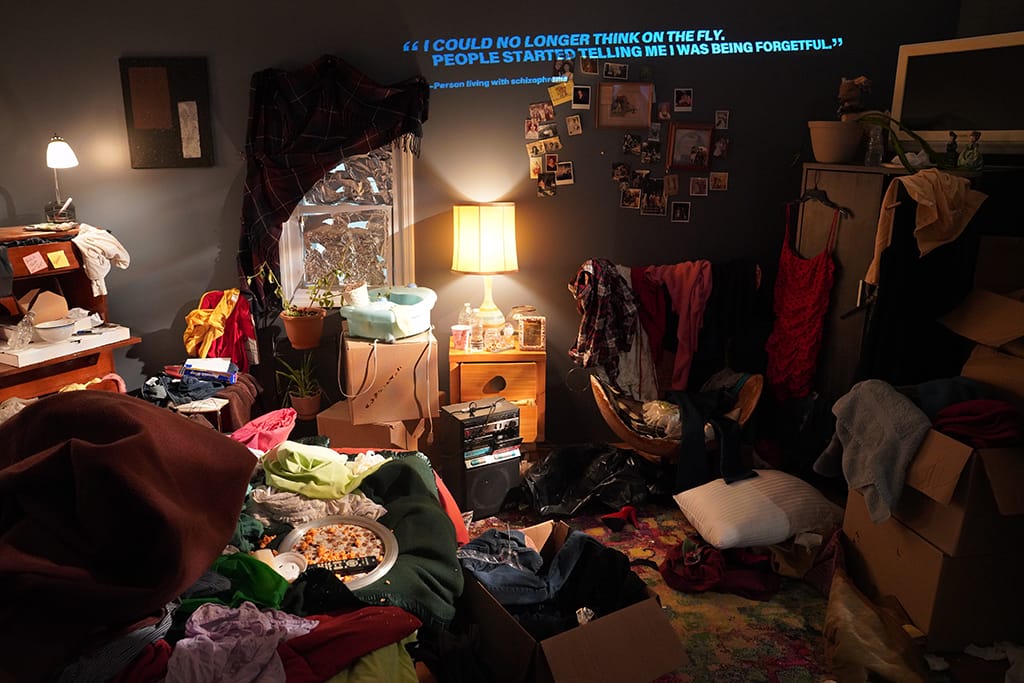While the U.S. has come a long way in terms of normalizing conversations around mental health and encouraging people to seek treatment for behavioral issues, there is still a broad stigmatization challenge to deal with.
If there is still a lingering, negative connotation to anxiety and depression, then the obstacles ahead of those living with several mental illnesses is that much more challenging.
For many, the mere mention of schizophrenia likely comes with preconceived notions and misconceptions about the disorder.
In popular culture, it is often portrayed by its more well-known effects, such as psychosis, hallucinations and hearing voices. However, there are also insinuations that those living with disorder are dangerous or violent, though many statistics show that this patient population is more likely to be the recipient of such violence.
For the 24 million people worldwide who live with schizophrenia, there are a host of cognitive issues related to the disorder that go overlooked and can adversely impact a person’s way of life.
With that in mind, Boehringer Ingelheim hosted a pop-up in SoHo Tuesday to underscore the extent to which these cognitive impairments impact people living with schizophrenia.
As part of its Stable Isn’t campaign, the drugmaker offered the public an immersive experience to demonstrate how much of a struggle it can be to live with schizophrenia.
The Look Beyond Stable display features two model apartments in disarray. The beds are unmade, garbage, leftover food and a litany of half-finished drinks are strewn across the floor and furniture, while aluminum foil with tiny holes cover the windows.
Additionally, sticky notes are found all over the apartment as reminders of tasks and errands to do, many of which pile up on top of each other.

Schizophrenia hits home
For Christine Sakdalan, the U.S. head of the mental health franchise at Boehringer Ingelheim, the campaign is both a professional and personal project as her brother has lived with the effects of schizophrenia for more than 30 years.
While having a messy bedroom is not a universal experience for people living with schizophrenia, Sakdalan said many do live in those kinds of situations and that the feedback from patient advocates was used to create the display.
At a media preview of the pop-up on Monday, Sakdalan said that when schizophrenia is discussed, the focus has largely remained on the “positive symptoms” like hallucinations and hearing voices. However, she noted that these cognitive impairments can hinder patients’ abilities to maintain employment, relationships and even a daily routine.
“Once the person living with schizophrenia is stabilized, all of the other negative symptoms like cognitive impairment are not talked about and are not treated,” she said. “This immersive experience aims to educate, amplify and have an urgent call to action.”
Sakdalan said this campaign is Boehringer Ingelheim’s way to encourage healthcare professionals and other pharma companies to look beyond stabilizing a patient’s condition and enable people to thrive.
Prior to its New York appearance, Stable Isn’t has traveled to multiple medical conferences and will continue to be displayed at upcoming industry events in the months to come.
Sakdalan added that the campaign is intended to show the critical unmet need among patients and caretakers as it relates to serious mental illnesses like schizophrenia as well as why there needs to be more investments to get innovative treatments across the finish line.
Boehringer Ingelheim has a robust pipeline with plans to enter and lead this space in the years to come, she said, but it starts with educating consumers, patients and caregivers about the issues at hand related to schizophrenia.
Art imitates life as a patient
Stable Isn’t is yet another example of Boehringer Ingelheim wielding the power of art to tell a healthcare-focused story on behalf of patients.
Over the summer, the drugmaker debuted its Unwearable Collaboration highlighting the physical and emotional pains faced by patients living with generalized pustular psoriasis (GPP). Boehringer Ingelheim collaborated with the Fashion Institute of Technology (FIT) to involve students in the creative process under the guidance of fashion designer Bart Hess.
This campaign to better understand and message around schizophrenia has parallels with the prior rare disease effort as Boehringer Ingelheim leans into the power of immersive, art-forward projects.
Sakdalan said visualizing this snippet of daily living provides HCPs, family members and friends with a glimpse into what living with this condition is like and emphasizes that the end goal of the care journey goes beyond achieving stability.
Without immersing viewers in the most common aspects of life with this condition, she said the general public may not gain the fullest extent of empathy for people who live with schizophrenia.
The company took steps to ensure that the art was not overdramatizing these lived experiences but still underscored where there is room for improvement in terms of treating this disorder, she noted.
“It’s important to understand what goes on in the home and behind the scenes in order to look beyond being stable,” she said. “They may seem OK in front of you, but in the background, they’re really not.”
